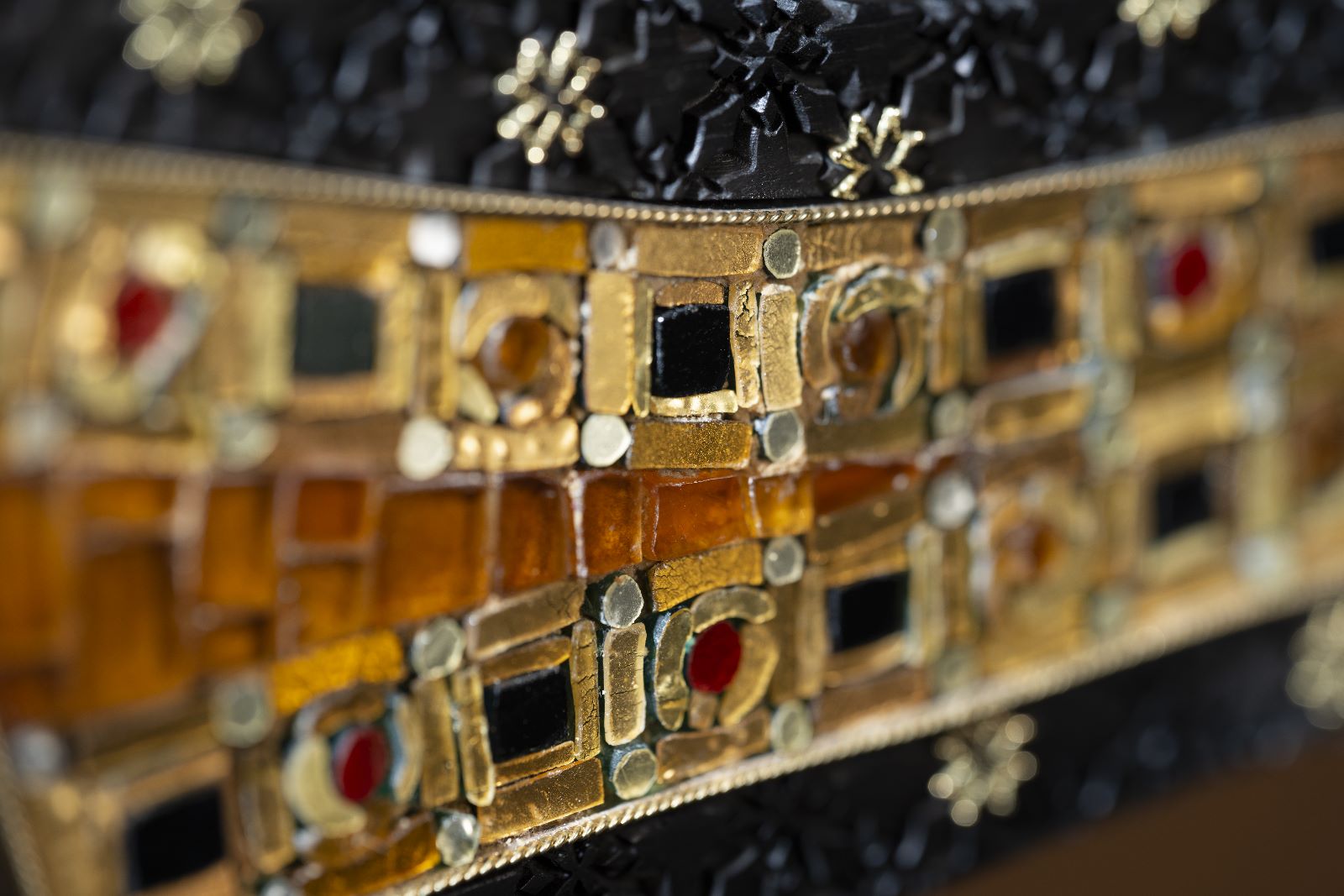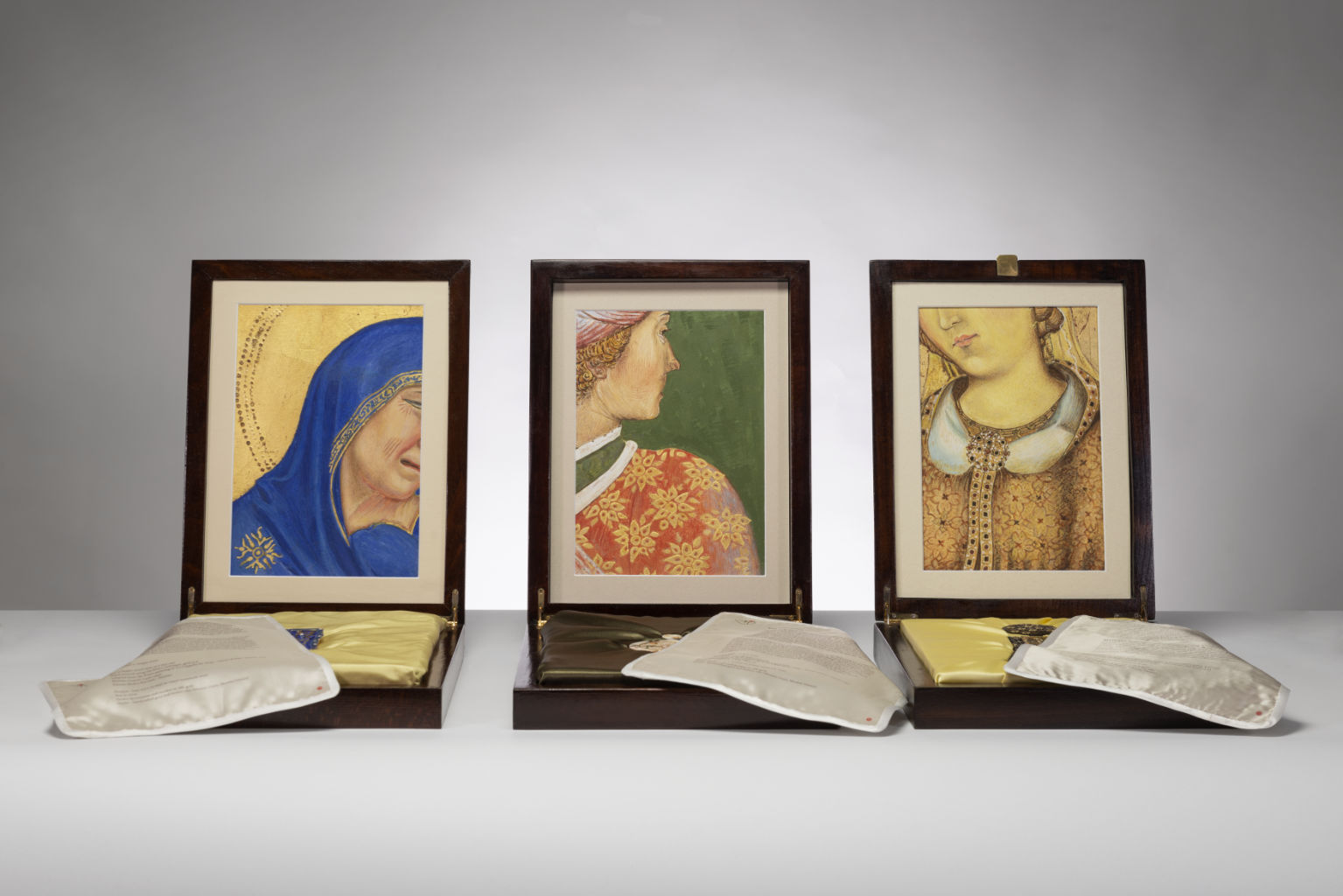
MANUELA PITTANA
Il futuro nasce dalla conoscenza di un prezioso passato
The Future is Born from the Knowledge of a Precious Past
PROGETTO / PROJECT
CAPRICCIO
(in lavorazione / under construction)
Il Capriccio indica già nel XVI secolo un’opera d’arte dalla forma libera, originale, in cui regnano la fantasia, la memoria e il desiderio. È un’attitudine verso l’eccezionale che si concretizza in opere che trasformano luoghi, immagini e sensazioni vissute (durante itinerari reali e virtuali) in oggetti straordinari, vere opere d’arte che assumono il bello in un patrimonio personale, unico e sempre riconducibile al presente. L’autore e il fruitore rivivono il tempo andato senza nostalgia, perché le esperienze, le atmosfere, le visioni incontrate nei Musei e nelle Chiese antiche, contengono nel Capriccio il genio dell’ispirazione e del ricordo.
Le origini del termine rievocano esperienze sensoriali magiche. Teorici e scrittori indicarono con capriccio tutte le manifestazioni artistiche caratterizzate dal gusto per la contaminazione fantastica, l’immaginazione esuberante, le invenzioni bizzarre, il compiacimento decorativo e il dialogo tra stili, tecniche e tempi diversi, a volte anche molto distanti tra loro.
Così, come molti altri termini artistici e musicali (due campi in cui l’Italia è sempre stata un’eccellenza), anche la parola Capriccio è passata alle altre lingue come italianismo, tra la seconda metà del Cinquecento e la prima del Seicento, arrivando anche al francese e al tedesco; per questo esso conserva ancora oggi “un sapore e un sapere” internazionale.
MANUELA PITTANA ha un percorso di formazione che parte dagli studi di restauro pittorico a Firenze dove frequenta la scuola per affreschi di Leonetto Tintori, attraverso le atmosfere artistiche di Venezia, fino alle influenze della scuola musiva di Spilimbergo.
Artista, restauratrice, mosaicista e miniaturista tra le più interessanti del panorama italiano contemporaneo, ha iniziato una ricerca unica nel suo genere, che personalizza l’idea di Capriccio. Con sapienza tecnica e perizia poetica l’artista riproduce particolari di opere d’arte classica, universalmente conosciute come straordinari capolavori d’arte. Partendo da queste citazioni Manuela Pittana realizza gioielli unici, sculture realizzate con materiali differenti, preziosi, trattati con maestria, completamente realizzati a mano secondo le regole di altissimo artigianato che hanno avuto origine nelle antiche botteghe italiane. Le sue opere si qualificano come straordinari gioielli d’arte, caratterizzati da una bellezza esclusiva e intramontabile.
Alessandra Santin
Critico d’Arte
..As early as the 16th century, the Capriccio suggests a work of art that is in free form, original, and in which imagination, memory, and desire are paramount. It is an attitude toward the exceptional, materialized in works that transform places, images and lived sensations – during real and virtual itineraries – into extraordinary objects, true works of art that render the beautiful as a patrimony that is at once personal, unique, and always traceable to the present.
The creator and the user relive the past without nostalgia because the experiences, atmospheres and visions encountered in museums and ancient churches contain within the Capriccio the genius of inspiration and of memory.
The origins of the term recall magical sensorial experiences. Theorists and authors referred to a Capriccio as any artistic manifestation characterized by a taste for fantastical fusions, exuberant imagination, bizarre inventions, decorative adornment and a dialogue between styles, techniques and different eras, at times quite disparate. Thus, like many other artistic and musical terms – two arenas in which Italy has always excelled – the word Capriccio passed into other languages, including French and German, as an Italianism between the second half of the 16th century and the first half of the 17th century. To this day, the term conserves an international flavor and flair.
MANUELA PITTANA’s unique professional itinerary initiates with her studies in the restoration of paintings in Florence, at the school for the study of frescoes established by Leonetto Tintori, passes through the artistic atmospheres of Venice, and more recently reflects the influences of the School of Mosaic Art at Spilimbergo. She is an artist, restorer, mosaicist and miniaturist, among the most interesting figures on the contemporary Italian art scene, with her unique vision that personalizes the idea of the Capriccio. With technical knowledge and poetic expertise, she reproduces details of classical works of art, universally recognized as extraordinary artistic masterpieces. Using these details as points of departure, Manuela Pittana creates unique pieces of jewelry, sculptures utilizing different precious materials treated with skill and created entirely by hand according to the highest standards of craftsmanship originating in ancient Italian workshops. Her creations are truly extraordinary pieces of art jewelry, characterized by their exclusive and timeless beauty.
Alessandra Santin
Art Critic

